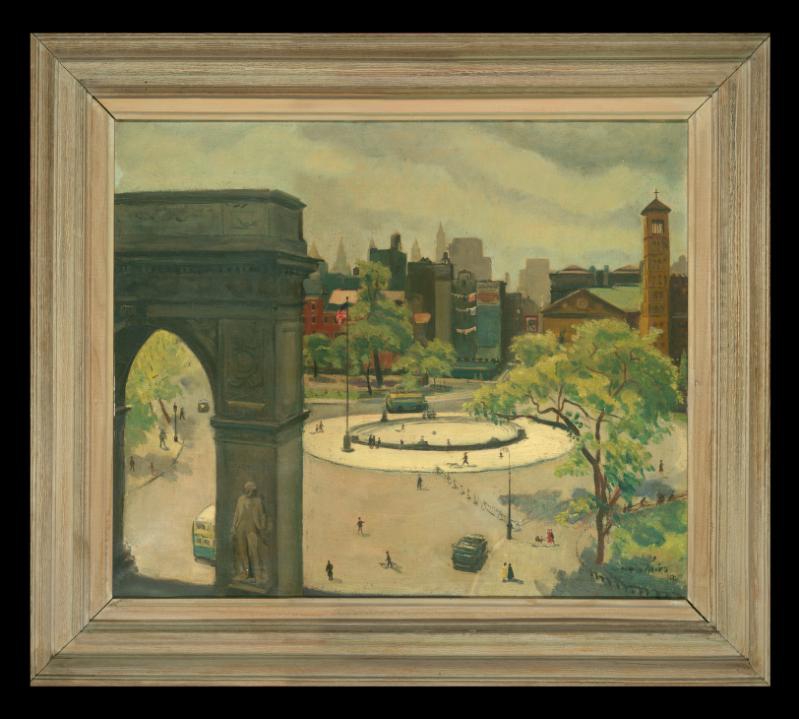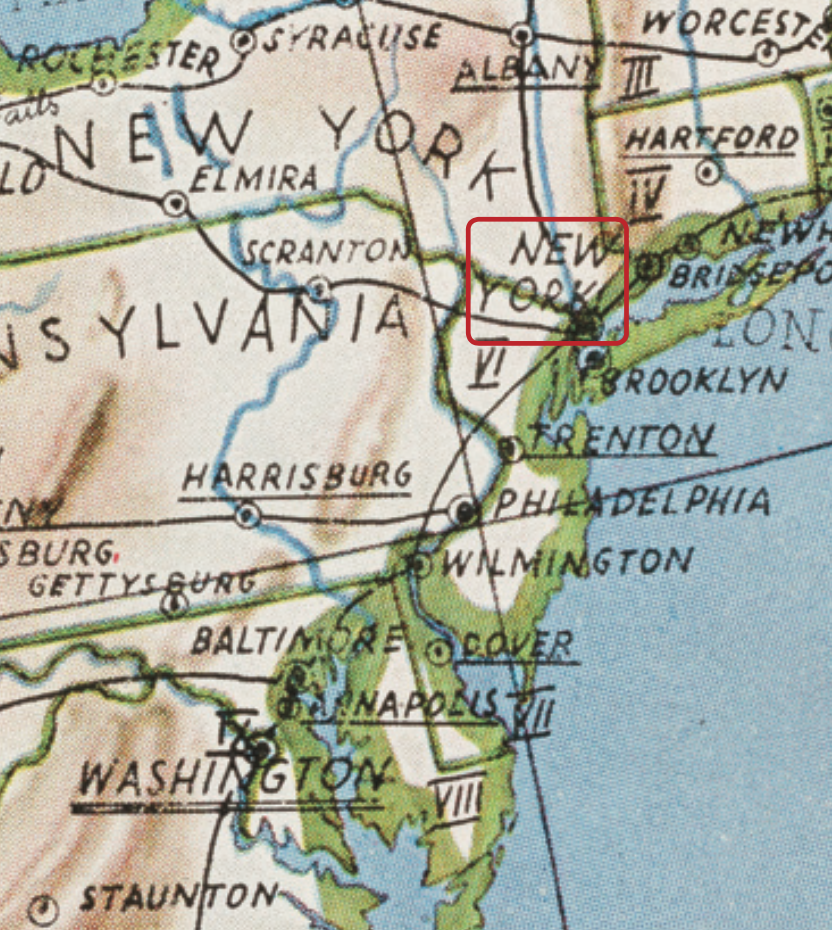Eugen Spiro
Artist 11 of 12

Eugen Spiro (1874–1972)
ARTISTIC WORK
In New York, Spiro continued to paint predominantly landscapes and portraits. The choice of people whose portraits he painted reflects the circle of German-Jewish émigrés he knew: Albert Einstein; writer and Nobel laureate Thomas Mann; and pianist Artur Schnabel. In this Manhattan cityscape, Spiro’s impressionistic style, with its fluid colors, is apparent. He chose a bird’s-eye view of Washington Square Park, mostly focusing on the famous arch but also highlighting the fountain, leisurely strolling people, and green trees. The scene represents his newly adopted home as tranquil and spacious.

LIFE & MIGRATION
Born in Breslau, Eugen Spiro was a member of avant-garde art Secessionist groups in Munich and Berlin. For many years, he also lived in Paris. The outbreak of WWI forced him to return to Germany, where he soon became a popular portrait painter. From 1915 to 1933 Spiro had a prolific career as a teacher, gallerist, and member of the board of the Berlin Secession. After the Nazi takeover, the sixty-one-year-old Spiro fled to Paris, where he was involved in the founding of the “Union des Artistes Allemands Libres”, a federation of exiled German artists whose work was defamed by the Nazis. After the German occupation of France in 1940, Spiro emigrated to the United States and worked as a teacher at the Wayman Adams School in Elizabethtown, New York. He remained an active painter until his late years, with several exhibitions in New York as well as Europe.